
New Mexicans for Science and Reason
presents

NMSR PUZZLES

This is the Old Puzzle Archive. See NEW Puzzles!

DECEMBER 2018 PUZZLE - "What's the Rule?"
Submitted by Dave Thomas
The following words can be clearly and unambiguously separated into two distinct groups.
ATOM, BOXED, CHECKBOOK, CHOICE, COCKED, DECKED, DECODE, DOCK, HOOCH, HOOKED, ICEBOX, MAXIMUM, MOUTH, OXIDE, TAXI, TIMOTHY, TOOTHY, TOYOTA, VOMIT, WAXY, WHAT, WITHOUT.
The December Bonus: What are the two groups?
Hall of Fame (December Puzzle Solvers):
Earl Dombroski (NM)
Rocky S. Stone (NM)
Mike Arms (NM)
Harold H. Gaines (KS)
Allen Robnett (NM)

MARCH '11 PUZZLE - "Look, Ma – No Hands!"
Courtesy John Geohegan.
The January Bonus problem about determining the direction of bicycle travel was fascinating. Maybe our readers will find similar satisfaction in the following bicycle problems.
1. Is the ability to ride "no hands" the result of fork geometry or gyroscopic forces?
2. If you're riding "no hands" and you push forward gently on the right handlebar, which way will the bike turn?
3. If you have a friend keep a stationary riderless bicycle upright and you then reach down and push the lower pedal to the rear, which way will the bicycle move? Which way will the pedals move?
4. Since the left pedal rotates clockwise relative to the crank, why is a lefthand thread used on the pedal spindle?
Rocky Stone (NM)
Ross Goeres (NM)
TO SEE HIDDEN SOLUTION TO MARCH PUZZLE: Select text from "HERE" to
1. Is the ability to ride "no hands" the result of fork geometry or gyroscopic forces? Ans. Fork geometry. This question was answered most persuasively by David E.H. Jones in the April 1970 issue of Physics Today, reprinted in Sept. 2006, showing the gyroscopic forces had very little effect but the fork design could result in ultra stability.
2. If you're riding "no hands" and you push forward gently on the right handlebar, which way will the bike turn? Ans. To the right. Due to counter-steering my bike swerves very slightly to the left and then steers into a right-hand turn with no force from my left hand.
3. If you have a friend keep a stationary riderless bicycle upright and you then reach down and push the lower pedal to the rear, which way will the bicycle move? Which way will the pedals move? Ans. The bicycle will roll backward and the pedals will rotate backwards in apparent defiance of the direction you're pushing. It's worth doing the experiment with a real bicycle.
4. Since the left pedal rotates clockwise relative to the crank, why is a left-hand thread used on the pedal spindle? Ans. Due to the downward force on the pedal, the pedal spindle in contact with the internal threads of the crank is given a counter-clockwise torque which would loosen a right-hand. thread.
"THERE"

FEBRUARY '11 PUZZLE - "Kid Conundrum!"
Courtesy Brain Teasers Forum, BrainDen.com.
Two friends are chatting:
- Peter, how old are your children?
- Well Thomas, there are three of them and the product of their ages is 36.
- That is not enough ...
- The sum of their ages is exactly the number of beers we have drunk today.
- That is still not enough.
- OK, the last thing is that my oldest child wears a red hat.
The February Bonus: How old were each of Peter's children?
Hall of Fame (February Puzzle Solvers):
Rocky Stone (NM)
Paul Braterman (UK)
Keith Gilbert (NM)
Eric Hanczyc (WA)
Ross Goeres (NM)
Harold H. Gaines (KS)
Mike Arms (NM)

JANUARY '11 PUZZLE - "Follow That Bike!"
Courtesy Peter Doyle, Dartmouth.
C. Dennis Thron has called attention to the following passage from The Adventure of the Priory School, by Sir Arthur Conan Doyle:
"This track, as you perceive, was made by a rider who was going from the direction of the school."
"Or towards it?"
"No, no, my dear Watson. The more deeply sunk impression is, of course, the hind wheel, upon which the weight rests. You perceive several places where it has passed across and obliterated the more shallow mark of the front one. It was undoubtedly heading away from the school."
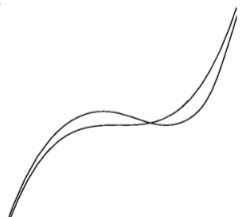
The January
Bonus: (A) Does Holmes know what he's talking about?
(B) Try to determine the direction of travel for the idealized bike tracks in this diagram.
Hall of Fame (January Puzzle Solvers):
John Geohegan (NM)
Eric Hanczyc (WA)
Honorable Mention: Rocky S. Stone (NM)

DECEMBER '10 PUZZLE - "The Three-Pointed Problem"
Submitted by Dave Thomas.
Consider these nine equilateral triangles; centroids are shown for the three non-shaded triangles.
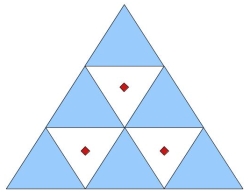
The December Bonus: What is the ratio of areas of the triangle whose vertices are the three centroids shown, to any individual triangle? And, to the large triangle composed of nine small ones?
Hall of Fame (December Puzzle Solvers):
Eric Hanczyc (WA)
Rocky S. Stone (NM)
Keith Gilbert (NM)
Ross Goeres (NM)
Harold H. Gaines (KS)
Mike Arms (NM)

NOVEMBER '10 PUZZLE - "A PLAYGROUND RACE"
Submitted by John Geohegan.
A playground race will be won by the runner who most quickly runs from a starting pole to a long North-South wall, touching any point along the wall, and then runs to a finishing pole which is 90 feet due northeast of the starting pole. If the wall is 70 feet west of the starting pole, what is the shortest distance the winner can run?
Hall of Fame (November Puzzle Solvers):
Harold Gaines (KS)
Rocky S. Stone (NM)
Ross Goeres (NM)
Keith Gilbert (NM)

OCTOBER '10 PUZZLE - "Binary Bemusement"
Submitted by Dave Thomas.
Just over 50 light years from Earth, the two small stars comprising Castor C orbit each other with a period of 0.8 days,
orbital speeds of 0.0004c (c=lightspeed), and a separation of about 1.39x10-7 lightyears (~1.6 million miles). Assume
that the orbital plane of Castor C contains/is parallel to the line-of-sight from Earth. If Einstein had been wrong –
if the light emitted by these binary stars did indeed depend on the motion of the source, and moves toward Earth at
speeds between 0.9996 and 1.0004c -- then, what would an Earth-based observer see upon training a telescope on Castor C?
(A) The two stars, both bright points moving in oscillating paths along opposite directions, with a period of just over
19 hours.
(B) Both stars, producing a continuous path of light, perhaps a very elongated ellipse.
(C) Two "necklaces" with dozens of stars in each, moving in the same direction, with stars appearing as pairs on one
side of the necklace, and disappearing as pairs on the other side.
BONUS BONUS: How large a telescope (Newton reflector diameter) would be required to actually resolve the separate
images of the binary stars?
Hall of Fame (October Puzzle Solvers):
Keith Gilbert (NM)

SEPTEMBER '10 PUZZLE - "Series-ously Infinite!"
Submitted by Dave Thomas.
Consider the replacement X ? 1 + 1/X. (A) If the first X is 1, what does the series (1, 2, 3/2, 5/3, …) converge to? (B) What do you get if you square the answer for (A), then subtract one? (C) What mathematician am I thinking of?
Hall of Fame (September Puzzle Solvers):
Paul Braterman (UK)
Mike Arms (NM)
Harold H. Gaines (KS)
Eric Hanczyc (WA)
Ross Goeres (NM)

AUGUST '10 PUZZLE - "Super-Size Me!"
Submitted by John Geohegan.
Use the nine digits, 1,2,3,4,5,6,7,8,and 9, each exactly once to form two numbers which give a maximum when multiplied together. Thus, 7128 times 56934 uses the digits properly but doesn't give the maximum possible product.
The August Bonus: What two numbers yield the maximum product?
Hall of Fame (August Puzzle Solvers):
Mike Arms(NM)
Ross Goeres (NM)
Michael Terrell (NM)

JULY '10 PUZZLE - "All Downhill From Here"
Submitted by Dave Thomas.
A physicist notes that two solid spheres of different sizes roll down a ramp at the same speeds, and similarly for two thin-walled hollow spheres, two solid cylinders, and two thin-walled hollow cylinders. When he races different shapes, however (such as a thin-walled hollow cylinder versus a solid sphere), they run at different speeds.
The July Bonus: If some solid and thin-walled hollow cylinders and spheres (four objects all together) are released simultaneously at the top of the ramp, in what order will they arrive at the bottom?
Hall of Fame (July Puzzle Solvers):
Mike Arms (NM)
Keith Gilbert (NM)
Harold H. Gaines (KS)
Ross Goeres (NM)

JUNE '10 PUZZLE - "MISSPELLING MISSISSIPPI"
Submitted by John Geohegan.
Of all the ways of arranging all eleven letters of Mississippi, how many ways don't spell Mississippi?
Hall of Fame (June Puzzle Solvers):
Keith Gilbert (NM)
Mike Arms (NM)
Rocky S. Stone (NM)
Ross Goeres (NM)

MAY '10 PUZZLE - "The Weightless Scale"
Submitted by Dave Thomas.
On the left, the massless scale hanging from the ceiling will read "10 kg" for the 10-kg mass shown. On the right is a system with a similar hanging scale, supporting a massless pulley and a 10-kg mass, with one rope anchored to the floor, as shown.
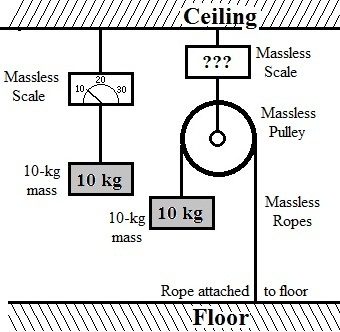
The May Puzzle: What is the reading on the Weightless Scale above the pulley?.
Hall of Fame (May Puzzle Solvers):
Paul S. Braterman (UK)
Ken Hessel (NM)
Harold H. Gaines (KS)
Mike Arms (NM)
Keith Gilbert (NM)
Ross Goeres (NM)

APRIL '10 PUZZLE - "Finding Inner Balance"
Submitted by Dave Thomas.
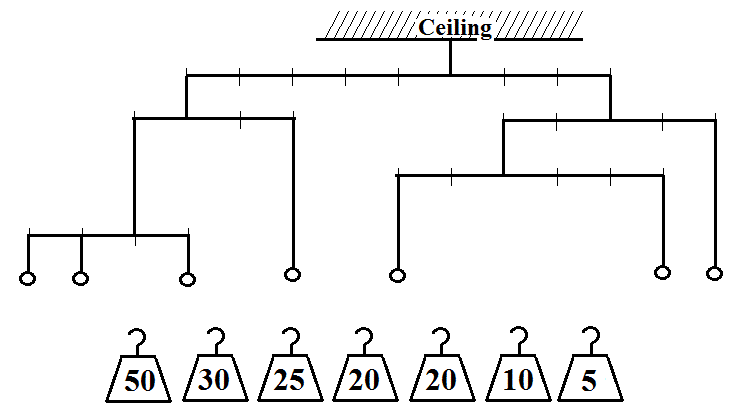
The April Puzzle: Can you arrange these seven weights from left-to-right to make this mobile perfectly balanced? Each weight is used only once.
Hall of Fame (April Puzzle Solvers):
Rocky S. Stone (NM)
Keith Gilbert (NM)
Harold Gaines (KS)
Terry Lauritsen (NM)
Mike Arms (NM)
Ross Goeres (NM)
Jerry W Barrington (OH)
Ian Tafoya (NM)
Ted Cloak (NM)

MARCH '10 PUZZLE - "Thar She Goes!"
Courtesy Saxon Math Stumpers.
Two uniform rods of equal length and unequal masses are connected by a massless and frictionless hinge. Initially, the rods are at rest, forming an equilateral triangle with a frictionless surface. At time t = 0 the lower ends of the rods begin to slide apart with only the force of gravity acting upon the system.

The March Puzzle: When the system comes to rest, how far has the hinge moved horizontally from its original position?
Hall of Fame (March Puzzle Solvers):
John Geohegan (NM)
John R. Lopez (NM)
Mike Arms* (NM)
Ross Goeres (NM)

FEBRUARY '10 PUZZLE - "Big Crowd at the Inn"
Courtesy seventeenth-century France.
41 persons eat at an inn. The total bill is 40 sous and each man pays 4 sous, each woman 3, and each child 1/3 sou.
The February Puzzle: How many men, women, and children were there?
Hall of Fame (February Puzzle Solvers):
Mike Arms (NM)
Rocky S. Stone (NM)
Harold Gaines (KS)
Keith Gilbert (NM)
Ross Goeres (NM)
Ian Tafoya (NM)
Eric Hanczyc (WA)
Margaret Mavretich (NM)
Ted Cloak (NM)
Bob Schmidt (NM)
Bob Carroll (NM)

JANUARY '10 PUZZLE - "Time?"
Adapted from Intriguing Mathematical Problems by Oswald Jacoby, with W. H. Benson.
Simpkins and Green made arrangements to meet at the railroad station to catch the 8:00 train to Philadelphia. Simpkins thinks that his watch is twenty-five minutes fast, although it is in fact ten minutes slow. Green thinks his watch is twenty minutes slow, while it has actually gained five minutes.
The January Puzzle: What will happen if both men, relying upon their watches, try to arrive at the station five minutes before train time?
Hall of Fame (January Puzzle Solvers):
Rocky S. Stone (NM)
Mike Arms (NM)
Eric Hanczyc (WA)
Keith Gilbert (NM)
Ken Hessel (NM)
Harold Gaines (KS)

DECEMBER '09 PUZZLE - "The Absent-Minded Rider"
Submitted by Dave Thomas
A bike enthusiast often rides several miles (mostly downhill) to his favorite lunch spot, Dan's Diner. He wanted to compare his average speed getting to the diner to his average speed for the more difficult return. The rider zeroed out his trusty Schwinn speedometer, and then used it to find that his average speed getting to lunch was 12 miles per hour (mph). After dining, however, the rider forgot to re-set the speedometer. Upon his return from lunch, the cyclist observed that the average cycling speed for the entire round trip was 9 mph. But, the rider still didn’t know what his return speed was.
The December Puzzle: What was the rider’s average speed on his return from lunch?
Hall of Fame (December Puzzle Solvers):
Bob Carroll (NY)
Rocky S. Stone (NM)
Paul Braterman (UK)
Eric Hanczyc (WA)
Keith Gilbert (NM)
Harold Gaines (KS)
Mike Arms (NM)
Ross Goeres (NM)
Ian Tafoya (NM)
Andrew Kennedy (MO)

NOVEMBER '09 PUZZLE - "What Comes Next?"
Submitted by Dave Thomas
The November Puzzle: What is the next number in the sequence 1, 7, 23, 63, 159, 383…?
Hall of Fame (November Puzzle Solvers):
Mike Arms (NM)
Rocky S. Stone (NM)
Harold Gaines (KS)
Ross Goeres (NM)
John Geohegan (NM)
Bob Carroll (NY)

OCTOBER '09 PUZZLE - "The Empty Flask"
Adapted from Intriguing Mathematical Problems by Oswald Jacoby, with W. H. Benson.
An apothecary found six flasks capable of holding 16, 18, 22, 23, 24, and 34 fluid ounces respectively. He filled some with distilled water, and then filled all but one of the rest with alcohol, noting that he had used precisely twice as much alcohol as water.
The October Puzzle: Which flask was left over? And which flasks were used for water, and which for alcohol?
Hall of Fame (October Puzzle Solvers):
Rocky S. Stone (NM)
Eric Hanczyc (WA)
Harold Gaines (KS)
Roy Thearle (UK)
Ross Goeres (NM)
Mike Arms (NM)

SEPTEMBER '09 PUZZLE - "The Six Knights"
Submitted by John Geohegan.
A small 3x4 chessboard has three black knights ( ) and three white knights (
) and three white knights ( ) as shown.
) as shown.
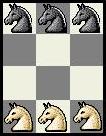
The September Puzzle: Show how to achieve the following position after 16 knight moves. (A knight moves two squares horizontally or vertically and one square vertically or horizontally, all combined as one move):
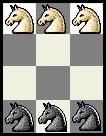
Hall of Fame (September Puzzle Solvers):
Ross Goeres (NM)
Rocky S. Stone (NM)

AUGUST '09 PUZZLE - "Fibonacci’s Metric Converter"
Submitted by Dave Thomas.
While on an expedition to Canada, an American scientist noticed a metric conversion factor hidden in the Fibonacci Series, which starts with two 1’s as the first two elements. Each subsequent element is the sum of the two preceding ones: 1, 1, 2, 3, 5, 8, 13, 21, 34, 55, 89, 144, … . During numerous mental conversions between miles and kilometers, the scientist noticed that, if a given element of the series represented a distance in miles, the following element was close to the equivalent distance in kilometers. For example, 3 miles is close to 5 kilometers; 5 miles is close to 8 kilometers, and so on.
The August Puzzle: For which two consecutive elements of the Fibonacci series is their ratio closest to the actual number of kilometers in a mile? For which two consecutive elements is the estimation error, in meters, the smallest?
The August UBER-Puzzle: What are the two integers less than 20 which, if taken as the first two elements of the series, yield at least one conversion in the series with an estimation error of less than two meters?
![]() What is "Estimation Error in Meters"? Consider 100 miles ~ 161 kilometers. The actual number of kilometers in 100.0 miles
is 100*1.609344 = 160.934 km, which is .066km (66 meters, 65.6 m for the truly geeky) from the "goal" of 161.000 km.
What is "Estimation Error in Meters"? Consider 100 miles ~ 161 kilometers. The actual number of kilometers in 100.0 miles
is 100*1.609344 = 160.934 km, which is .066km (66 meters, 65.6 m for the truly geeky) from the "goal" of 161.000 km.
For 100mile ~ 161km, then, the "Estimation Error" is about 66 meters.
Hall of Fame (August Puzzle Solvers):
Harold Gaines (KS)
John Geohegan (NM)
Ross Goeres (NM)
Mike Arms (NM)

JULY '09 PUZZLE - "Bargain Day"
Adapted from "Intriguing Mathematical Problems" by Oswald Jacoby and William Benson
On the final day of his close-out sale, a merchant hastily disposed of two lamps at the bargain price of $12 apiece. He estimated that he must have made some net profit on the combined transactions, since he made a 25 percent profit on one, and only took a 20 percent loss on the other.
The July Puzzle: Was he correct in his estimate?
Hall of Fame (July Puzzle Solvers):
K Sengupta (Calcutta,INDIA)
Ross Goeres (NM)
Bob Carroll (NY)
Rocky S. Stone (NM)
Harold Gaines (KS)
Eugene Aronson (NM)
Roy Thearle (UK)
Mike Arms (NM)

JUNE '09 PUZZLE - "The Big Shakedown"
Submitted by Dave Thomas
At a Seismology conference, several scientists attending Session A (Sustained Shaking Events) celebrated the meeting by having every attendee shake hands with everyone else in the room. In the next room, all the participants of parallel Session B (Shakytown After the Big One), similarly shook hands all around.
The June Puzzle: If the number of handshakes for Session B was exactly 50 more than for Session A, how many scientists were in Sessions A and B respectively?
Hall of Fame (June Puzzle Solvers):
K Sengupta (Calcutta,INDIA)
Mike Arms (NM)
Ross Goeres (NM)
Harold Gaines (KS)
Keith Gilbert (NM)
Bob Carroll (NY)
Eugene Aronson (NM)
Rocky S. Stone (NM)
Roy Thearle (UK)

MAY '09 PUZZLE - "Mystery on the Second Floor"
Submitted by Ross Goeres (adopted from The Economist, April 18, 2009)
There are three light switches on the ground-floor wall of a three-story house. Two of the switches do nothing, but one of them controls a bulb on the second floor. When you begin, the bulb is off. You can only make one visit to the second floor.
The May Puzzle: How do you work out which switch is the one that controls the light?
Hall of Fame (May Puzzle Solvers):
Rocky S. Stone (Tijeras, NM)
Keith Gilbert (NM)
Ken Hessel (NM)
Bob Carroll (NY)

APRIL '09 PUZZLE - "Monkey Madness"
Submitted by Eugene Aronson
On a desert island, five men and a monkey gather cocoanuts all day, and then sleep. One man awakens. He divides the cocoanuts into five equal shares. There is one left over, which he gives to the monkey. He hides his share and goes to sleep. The next man then awakens and does the same, and so on for all the men.
The April Puzzle: What is the minimum number of cocoanuts originally present?
Hall of Fame (April Puzzle Solvers):
Rocky S. Stone (Tijeras, NM)
K Sengupta (Calcutta,INDIA)
Harold Gaines (KS)
Eric Hanczyc (WA)
Ross Goeres (NM)
Mike Arms (NM)
![]()
MARCH '09 PUZZLE - "Back to the Ponderosa"
Submitted by Dave Thomas
Three brothers, Joe, Adam, and Hoss, can together pick twice as many goobers per hour as Joe alone, and three times as many as Adam alone.

The March Puzzle: if the slowest picker can pick a pound per hour, how fast can the brothers pick by themselves, and as a team?
Hall of Fame (March Puzzle Solvers):
K Sengupta (Calcutta,INDIA)
Mike Arms (NM)
Harold Gaines (KS)
Ross Goeres (NM)
Eric Hanczyc (WA)
Keith Gilbert (NM)
Eugene Aronson (NM)
Roger Hart-York (NM)
Ken Lynch (TX)
![]()
FEBRUARY '09 PUZZLE - "A MATHEMATICAL JOKE"
Submitted by John Geohegan
The following problem was published as problem E163 in the American Mathematical Monthly, 1935, and reprinted by Ross Honsberger in Mathematical Morsels, 1978, as "A Mathematical Joke" What's the answer, and what's the joke?
A man purchased at a post-office some one-cent stamps, three-fourths as many two's as one's, three-fourths as many five's as two's, and five eight-cent stamps. He paid for them all with a single bill, and there was no change.
The February Puzzle: How many stamps of each kind did he buy?
Hall of Fame (February Puzzle Solvers):
Rocky S. Stone (Tijeras, NM)
Ross Goeres (NM)
Harold Gaines (KS)
Eric Hanczyc (WA)
Mike Arms (NM)
![]()
JANUARY '09 PUZZLE - "WHAT COMES NEXT?"
Submitted by Dave Thomas
What is the next number in the sequence
3, 8, 14, 23, 37, 58?
Hall of Fame (January Puzzle Solvers):
K Sengupta (Calcutta,INDIA)
Rocky S. Stone (Tijeras, NM)
Bob Carroll (NY)
Eric Hanczyc (WA)
Kent Langsteiner (NM)
Cathy Burnell (NM)
Harold Gaines (KS)
Roy Thearle (UK)
Diane Marsh (TX)
Ross Goeres (NM)
![]()
DECEMBER '08 PUZZLE - "AGAINST THE ODDS"
Submitted by John Geohegan
Three cards are to be selected at random from a packet of playing cards.
The December Bonus: If the odds are 11 to 2 against all three being spades, how many cards are in the packet and how many are spades?
Hall of Fame (December Puzzle Solvers):
K Sengupta (Calcutta,INDIA)
Dave Thomas (NM)
Harold Gaines (KS)
Keith Gilbert (NM)
Eugene Aronson (NM)
Ken Lynch (TX)
Roy Thearle (UK)
Ross Goeres (NM)
![]()
NOVEMBER '08 PUZZLE - "ELECTORAL CLOUT"
Submitted by Dave Thomas
In the near future, many of the 50 states of the union, including New Mexico and Texas, will have different numbers of congressional representatives than at present. In the presidential electoral college, the number of electors per state equals that state’s number of congressmen, plus two (for the state’s senators). The number of congressmen is directly proportional to the state’s population. If the future number of congressmen in Texas is eight times that of New Mexico, then New Mexico would realize 20% more clout with the electoral college than with strict proportional representation, while Texas would realize 10% less clout.
The November Bonus: What is the future number of congressional representatives nationwide? In New Mexico? In Texas?
HINT: in this hypothetical Future, the number of congressmen is NOT federally mandated as 438.
Hall of Fame (November Puzzle Solvers):
John Geohegan (NM)
![]()
OCTOBER '08 PUZZLE - "MARKET MELTDOWN"
Submitted by Dave Thomas
Investor Henry “Hank” Swank uses the services of “Todo Toro” discount brokers, which charges $10.00 for each buy/sell transaction. On Monday, he used the service to buy 250 shares of FBNC (Fly By Night Corp.), at $60.00 per share. By Tuesday, these stocks had increased in value by 60%, and Hank decided to sell. By the time the sale transaction went through, however, the volatile stocks had lost 3/8 of their value.
The October Bonus: What was Hank’s Gain or Loss?
Hall of Fame (October Puzzle Solvers):
K Sengupta (Calcutta,INDIA)
Eric Hanczyc (WA)
Keith Gilbert (NM)
Ross Goeres (NM)
Eugene Aronson (NM)
![]()
SEPTEMBER '08 PUZZLE - "THE SOCIAL SECURITY NUMBER"
Submitted by John Geohegan
Reading a social security number consisting of the 9 digits, 1 through 9 though not in that order, from left to right, the first two digits form a number divisible by 2, the first three digits form a number divisible by three, the first four digits form a number divisible by four, and so on through all nine digits so that the entire nine-digit number is divisible by 9.
The September Bonus: What is the number?
Hall of Fame (September Puzzle Solvers):
K Sengupta (Calcutta,INDIA)
Dave Thomas (NM)
Eric Hanczyc (WA)
Ross Goeres (NM)
Eugene Aronson (NM)
Ken Lynch (TX)
![]()
AUGUST '08 PUZZLE - "The Time Is...?"
Submitted by Dave Thomas (adapted from Sam Loyd)
As a man was strolling through downtown, he popped into the office of the Ministry of Puzzles. He asked the receptionist "Good morning. Do you have the time?" The receptionist answered "Simply add one quarter of the time from midnight until now to half the time from now until midnight, and you will have the correct answer."
The August Bonus: What time was it?
Double Bonus: Had the man said “Good afternoon…” instead, what time would it have been?
Hall of Fame (August Puzzle Solvers):
K Sengupta (Calcutta,INDIA)
Keith Gilbert (NM)
John Geohegan (NM)
Ross Goeres (NM)
Harold Gaines (KS)
Eric Hanczyc (WA)
Bob Carroll (NY)
Eugene Aronson (NM)
![]()
JULY '08 PUZZLE - "THE CHICKEN OR THE EGG?"
Submitted by Dave Thomas
A New Mexican chicken farmer hired a consultant recently laid off from Los Alamos Lab. After much study, the consultant announced that "One and a half hens can lay one and a half eggs in one and a half days."
The July Bonus: How many hens are needed for the farmer to produce a dozen eggs in six days?
Hall of Fame (July Puzzle Solvers):
K Sengupta (Calcutta,INDIA)
Keith Gilbert (NM)
Eric Hanczyc (WA)
Ross Goeres (NM)
Eugene Aronson (NM)
Ken Lynch (TX)
Harold Gaines (KS)
![]()
JUNE '08 PUZZLE - "TWO TRAINS"
Submitted by John Geohegan
(appeared as problem E1386 in the American Mathematical Monthly, 1959, and is reprinted in Mathematical Morsels, by Ross Honsberger, 1978.)
In overtaking a freight, a passenger train which is x times as fast takes x times as long to pass it as it takes the two trains to pass when going in opposite directions.
The June Bonus: Find x
Hall of Fame (June Puzzle Solvers):
K Sengupta (Calcutta,INDIA)
Eric Hanczyc (WA)
Eugene Aronson (NM)
Keith Gilbert (NM)
Roger Kilgore (NM)
Ross Goeres (NM)
![]()
MAY '08 PUZZLE - "Daylight Savings Downside"
Submitted by Dave Thomas
A commuter’s van pool drops him off behind the police station every night at 6 PM, and
his wife arrives there at exactly 6 PM to pick him up. On the first day of Daylight Savings Time,
however, the man had remembered to turn his clock an hour ahead, but his wife had forgotten
completely. Finding himself without a ride (because of his wife’s thinking that it was 5 PM),
the commuter started walking home. His wife came across him walking down the road some time later,
and picked him up for the ride back home. The commuter’s wife ended up getting back home eight
minutes earlier than she had expected.
The May Bonus: How long was the
man’s walk before his wife picked him
up? Hall of Fame (May Puzzle Solvers):
K Sengupta (Calcutta,INDIA)
Ross Goeres (NM)
Eugene Aronson (NM)
Eric Hanczyc (WA)
Ken Lynch (TX)
![]()
APRIL '08 PUZZLE - "JACKS OF THREE TRADES"
Submitted by Dave Thomas
The MegaGenomics Corporation placed a want ad for a position requiring knowledge of biology, mathematics and computer science. Of the 60 respondents who submitted applications, 46 had training in biology, 40 had training in mathematics, 43 had training in computer science, and 10 had no training in either biology, mathematics or computer science. There are three times as many applicants with mathematics-only backgrounds as with computer-science-only backgrounds; and, there are twice as many applicants with biology-only backgrounds as with computer-science-only backgrounds.
The April Bonus: How many of the applicants had undergone training in all three fields? Hall of Fame (April Puzzle Solvers):
Steve's Brother in Law (CA)
K Sengupta (Calcutta,INDIA)
Keith Gilbert (NM)
Eric Hanczyc (WA)
Eugene Aronson (NM)
Ross Goeres (NM)
![]()
MARCH '08 PUZZLE - "CORDIALITY BEFORE CORDIALS"
Submitted by Ken Lynch
A party of three couples (Ben and Alice being one couple) enters a room and shakes hands based on these conditions: a) Once you shake a person's hand, you do not shake with that person again. b) Couples do not shake hands with each other. Alice asked each person how many hands he/she shook, and everyone gave her a different answer.
The March Bonus: How many hands did Ben shake?
Hall of Fame (March Puzzle Solvers):
Steve's Brother in Law (CA)
K Sengupta (Calcutta,INDIA)
Eugene Aronson (NM)
Ross Goeres (NM)
Eric Hanczyc (WA)
![]()
FEBRUARY '08 PUZZLE - "Playing with Fire"
Submitted by Paul Braterman
Hall of Fame (February Puzzle Solvers):
Steve's Brother in Law (CA)
K Sengupta (Calcutta,INDIA)
Eugene Aronson (NM)
Eric Hanczyc (WA)
Ross Goeres (NM)
Bob Schmidt (NM)
![]()
JANUARY '08 PUZZLE - "The Flower and the Lake"
Submitted by Dave Thomas, after Longfellow
The January Bonus: how deep is the lake?
Hall of Fame (January Puzzle Solvers):
Rocky S. Stone (Tijeras, NM)
Steve's Brother in Law (CA)
K Sengupta (Calcutta,INDIA)
Keith Gilbert (NM)
Ross Goeres (NM)
John Lopez (NM)
Paul Braterman (NM)
TSgt Michael K Stage(NM)
![]()
DECEMBER '07 PUZZLE - "The Crazy Clocks"
Submitted by Dave Thomas
Based on a True Story!
The December Bonus:If the clocks appear to be two minutes apart for twice as long as they appear to be one minute apart, and assuming both clocks can keep perfect time, what is the actual time difference (in seconds) between the clocks?
Hall of Fame (December Puzzle Solvers):
K Sengupta (Calcutta,INDIA)
Steve's Brother in Law(CA)
Eugene Aronson (NM)
Ross Goeres (NM)
Nick Seigal (Eugene OR)
![]()
NOVEMBER '07 PUZZLE - "By The Numbers"
Submitted by Ken Lynch (from Douglas Hofstadter’s Metamagical Themas)
The November Bonus: Find two solutions.
Hall of Fame (November Puzzle Solvers):
K Sengupta (Calcutta,INDIA)
Steve's Brother in Law(CA)
Eugene Aronson (NM)
Ross Goeres (NM)
Charles Vaughn (Rotterdam, NL)
![]()
OCTOBER '07 PUZZLE - “Super Bounce”
Submitted by Dave Thomas
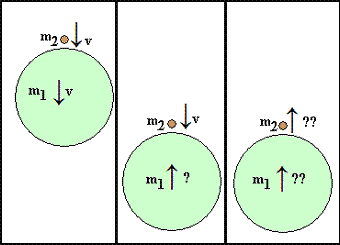
The October Bonus: What is the highest that the small ball can bounce?
(A) 5 feet
(B) 10 feet,
(C) 15 feet,
(D) 20 feet,
(E) 45 feet.
Hall of Fame (October Puzzle Solvers):
K Sengupta (Calcutta,
INDIA)
Keith Gilbert (NM)
Eugene Aronson (NM)
![]()
SEPTEMBER '07 PUZZLE - “Trisecting a Clock Face”
Submitted by Gene Aronson
Hall of Fame (September Puzzle Solvers):
K Sengupta (Calcutta, INDIA)
Ross Goeres (NM)
John Lopez (NM)
![]()
AUGUST '07 PUZZLE - “Gearing Up for a Mystery!”
Submitted by John Geohegan
Shown below are two meshing gears marked with arrows pointing toward each other. The larger gear has 181 teeth.

The August Bonus:
How many turns must the smaller gear make before the arrows again point to each other?
Hall of Fame (August Puzzle Solvers):
Steve's brother-in-law (CA)
K Sengupta (Calcutta, INDIA)
Ross Goeres (NM)
Eugene Aronson (NM)
![]()
JULY '07 PUZZLE - “The Poorly-Planned Polygraph”
Submitted by Dave Thomas
As the four subjects gave their two statements each, George turned white, as he realized that simple logic would allow the polygraph examiners to decide which statements were True or False, making it very easy for them to cheat.
Here are the four pairs of statements:
Arnie said: It wasn't me. It was Carl.
Betty said: It was Arnie. It wasn't Carl.
Carl said: It wasn't Betty. It wasn't Debbie.
Debbie said: It wasn't Carl. It was me!
The July Bonus:
(A) Which are lies, and which are true?
(B) Who hid the bunny?
Hall of Fame (July Puzzle Solvers):
K Sengupta (Calcutta, INDIA)
Steve's brother-in-law (CA)
Ross Goeres (NM)
Roy Thearle (UK)
Eric Hanczyc (WA)
Eugene Aronson (NM)
![]()
JUNE '07 PUZZLE - “Number Cipher!”
Submitted by Ken Lynch
2831
+ 101461
+ 513122
= 617414
The June Bonus:
(A) Replace each digit with a different digit to make another correct addition problem; no digit may replace itself. It’s a Numerical Cipher!
(B) Can you replace each digit with a letter to spell the names of four of the United States?
Hall of Fame (June Puzzle Solvers):
K Sengupta (Calcutta, INDIA)
Ray Comas (OH)
Ross Goeres (NM)
Eugene Aronson (NM)
Eric Hanczyc (WA)
![]()
May '07 PUZZLE - “What is the Product?”
Submitted by John Geohegan
Three digits, a,b,and c have been used to form the three digit numbers abc, bca, and cab, which have then been multiplied to make a 9-digit product. The number 234,235,286 is not the product, but 6 is in the proper place and the other digits are disordered.
The May Bonus: What is the Product?
Hall of Fame (May Puzzle Solvers):
K Sengupta (Calcutta, INDIA)
Ray Comas (OH)
Ross Goeres (NM)
Eugene Aronson (NM)
Eric Hanczyc (WA)
Paul Flocken (NC)
![]()
April '07 PUZZLE - “Derek's Appointment”
Derek bicycles from Abercrombie to Fitch for a one o'clock appointment. After pedalling at a steady rate for 42 kilometers, he increases his speed by 3 km/hr and arrives at precisely 1:00. If he hadn't increased his speed he would have been 18 minutes late, and if he had made the whole trip at the greater speed he would have arrived, exhausted, 42 minutes early.
The April Bonus: What time did Derek leave Abercrombie?
Hall of Fame (April Puzzle Solvers):
Dave Thomas (NM)
Keith Gilbert (NM)
Ray Comas (OH)
Bob Schmidt (NM)
Ross Goeres (NM)
Eugene Aronson (NM)
![]()
March '07 PUZZLE - “Alice and Bob and the Tossed Coins”
submitted by Ray Comas (Ohio)
The March Bonus: Assuming all coins are fair coins, what is the probability that Alice will produce more heads with her coin toss than Bob does with his coin toss?
Hall of Fame (March Puzzle Solvers):
K Sengupta (Calcutta, INDIA)
Roy Thearle (UK)
Bob Carroll (NY)
Eric Hanczyc (WA)
Paul Braterman (NM)
Keith Gilbert (NM)
Eugene Aronson (NM)
Ross Goeres (NM)
![]()
February '07 PUZZLE - “SORTING SUNDRY SIBLINGS”
submitted by Dave Thomas
The February Bonus: How many Starling Siblings are there?.
Hall of Fame (February Puzzle Solvers):
K Sengupta (Calcutta, INDIA)
Ray Comas (OH)
Harry Murphy (NM)
Harold Gaines (KS)
Roy Thearle (UK)
John Geohegan (NM)
Christian Winteler, (Switzerland)
Eric Hanczyc (WA)
Bob Carroll (NY)
Eugene Aronson (NM)
Ross Goeres (NM)
Bob Schmidt (NM)
![]()
January '07 PUZZLE - “BETTING ON CHUCK-A-LUCK”
submitted by John Geohegan
But really, how much does the player stand to win or lose on an average bet of one dollar?
Hall of Fame (January Puzzle Solvers):
K Sengupta (Calcutta, INDIA)
Dave Thomas (NM)
Keith Gilbert (NM)
Ray Comas (OH)
Eugene Aronson (NM)
Grey Wolf (anonymous lurker on the Internet)
W. Kevin Vicklund (MI)
![]()
DECEMBER '06 PUZZLE - "Grazing Grass by the Numbers!"
submitted by K Sengupta (Calcutta, INDIA)
Three friends Pedro, Quentin and Rhett jointly hire the grassland for $6930. They agree that the share of rent paid by any given friend would be determined in accordance with the total amount of grass consumed by his pets.
Pedro grazes 9 cows and 16 sheep for a period of 20 days; Quentin grazes 10 cows and 3 sheep for 28 days and, Rhett grazes 6 cows and 13 sheep for 27 days.
The December Bonus: Determine the respective share of rent payable by Pedro, Quentin and Rhett on the grassland from the information inclusive of the foregoing statements.
Hall of Fame (December Puzzle Solvers):
John Geohegan (NM)
Ray Comas (OH)
Eugene Aronson (NM)
![]()
NOVEMBER '06 PUZZLE - "Squaring,Cubing,Ten Digits -Oh My!"
submitted by John Geohegan
The November Bonus: What is that certain number?
Hall of Fame (November Puzzle Solvers):
K Sengupta (Calcutta, INDIA)
Harold Gaines (KS)
Ray Comas (OH)
Eric Hanczyc (WA)
Eugene Aronson (NM)
Bob Schmidt (NM)
![]()
OCTOBER '06 PUZZLE - "Starting the Election Party"
submitted by Dave Thomas
The October Bonus:
(a) If only half of the remaining voters (40% of precincts) vote for Bob, will he win?
(b) At what percentage of precincts reporting will Bill E. Bob be justified in popping the cork off of a champagne bottle?
Hall of Fame (October Puzzle Solvers):
W. Kevin Vicklund (MI)
Grey Wolf (anonymous lurker on the Internet)
K Sengupta (Calcutta, INDIA)
Eric Hanczyc (WA)
![]()
SEPTEMBER '06 PUZZLE - "FAIR TOSSES"
submitted by Ken Lynch
The September Bonus: What is the probability that:
a) Alice wins on her 1st toss
b) Bob wins on his 1st toss
c) Alice wins on her 3rd toss
d) Bob wins on his 5th toss
e) Alice wins.
Hall of Fame (September Puzzle Solvers):
K Sengupta (Calcutta, INDIA)
Eric Hanczyc (WA)
W. Kevin Vicklund (MI)
Harold Gaines (KS)
Eugene Aronson (NM)
![]()
AUGUST '06 PUZZLE - "THE PIRATE CHEST"
submitted by Dave Thomas

You have been captured by Pirates while sailing the Carribean, and have been brought before their gruff Captain. With a sinister snarl, he barks "I've a chest here that holds 120 pounds of pure gold coins. Some of these coins be decloons [10 ounces each], and the rest be triploons [three ounces each]. Now, mate, if ye can tell me exactly how many decloons and triploons are in my chest, ye walks away a free man. Get it wrong, and ye'll be walkin' the Plank!" After another pirate suggested that the riddle was perhaps overly challenging, the Captain snorted, and then offered a hint: "Awright, matey - the number of decloons times the number of triploons couldn't be larger!"
The August Bonus: For your life - how many decloons and how many triploons are in the chest?
Hall of Fame (August Puzzle Solvers/HONORARY PIRATES):
Jesse Johnson (NM)
K Sengupta (Calcutta, INDIA)
Bob Carroll (NY)
Harold Gaines (KS)
Jim Mitchell (NM)
Eric Hanczyc (WA)
Ross Goeres (NM)
Ken Lynch (TX)
Ray Comas (OH)
Eugene Aronson (NM)
Grey Wolf (anonymous lurker on the Internet)
Marek Ctrnact (Czech
Republic)
Jeff Elliott (Spanish colony of
California)
Christian Winteler (Switzerland)
John M. Sovitsky (VA)
Roy Thearle (UK)
W. Kevin Vicklund (MI)
Calum mac Leoid (Pentamere)
![]()
JULY '06 PUZZLE - "THE LAW OF AVERAGES "
submitted by Dave Thomas & Ross Goeres
The July Bonus: (A) How fast must you travel on the second kilometer of track to achieve an overall average speed of 30 km/hour? (What's your off-the-hip estimate? And your Final Answer?) (B) How fast must you travel on the second kilometer of track to achieve an overall average speed of 40 km/hour? (C) What have you learned, Grasshopper, about trying to average ratios?
Hall of Fame (July Puzzle Solvers):
Bob Carroll (NY)
Jen Niver (NM)
Eric Hanczyc (WA)
Eugene Aronson (NM)
Harold Gaines (KS)
Keith Gilbert (NM)
K Sengupta (Calcutta, INDIA)
![]()
JUNE '06 PUZZLE - "TOUCHED BY A TEN-FOOT POLE "
submitted by Gene Aronson
(Gene Aronson has submitted the following problem in slightly different form )
A ten-foot pole floats in a large swimming pool shaped approximately as shown in the sketch below. As the pole makes one circuit around the pool (BLACK boundary), both ends of the pole bump continuously against the wall. During this circuit, point P on the pole, six feet from one end, traces out the smaller area labelled A (RED boundary).
.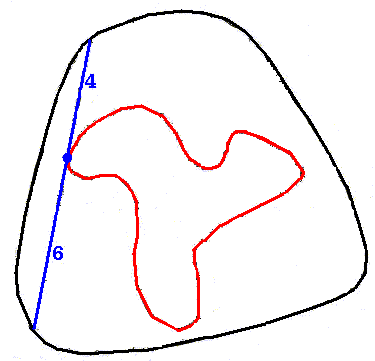
HOW MUCH SMALLER than the pool, in square feet, is area A?
Hall of Fame (June Puzzle Solvers):
Harold Gaines (KS)
K Sengupta (Calcutta, INDIA)
Gene Delloro (Toronto, ON)
Eric Hanczyc (WA)
Bob Carroll (NY)
![]()
MAY '06 PUZZLE - "Mr. Auber and Mr. Benatar "
submitted by K Sengupta of Calcutta, INDIA
A mutual acquaintance, Mr. Cavalli , who is aware of the above facts ( but doesn't know the actual ID numbers of the two gentlemen), queried Mr. Auber and Mr. Benatar in turn about the sum of the digits in their ID Numbers. The responses elicited by him were respectively 44 and 27.
At this point, Mr. Cavalli requested Mr. Auber and Mr. Benatar give some additional information. Both gentlemen answered with a new question: "What are the smallest possible values for the two ID numbers?"
Thereafter, Mr. Cavalli was able to ascertain precisely the ID numbers of Mr. Auber and Mr. Benatar.
Then, The ID # of Mr. Auber = ? and, The ID # of Mr.Benatar = ?
Hall of Fame (May Puzzle Solvers):
Aaron Sullivan (AZ)
Harold Gaines (KS)
Eric Hanczyc (WA)
Bob Schmidt (NM)
![]()
APRIL '06 PUZZLE - "CIPHER ADDITION..."
submitted by John Geohegan
Here's an addition cryptarithm sent in by Ken Lynch. Difficult as it is to solve, composing it seems close to a miracle.
|
A P P R E C I A T I V E + I N C A P A C I T A T E + I N D E P E N D E N C E = P A R T I C I P A T E D |
![]()
MARCH '06 PUZZLE - "The Race of the Weights..."
submitted by John Geohegan
Hall of Fame (March Puzzle Solvers):
Dave Thomas (NM)
Ross Goeres (NM)
Harold Gaines (KS)
Eugene Aronson (NM)
Eric Hanczyc (WA)
Mike Denny (AZ)
![]()
FEBRUARY '06 PUZZLE - "My Candle Burns at One End..."
submitted by John Geohegan
Hall of Fame (February Puzzle Solvers):
William Decorie (IL) (b)
Ross Goeres (NM) (a,b)
Keith Gilbert (NM) (a,b)
Harold Gaines (KS) (a,b)
![]()
JANUARY '06 PUZZLE - "SCALING UP"
submitted by Dave Thomas
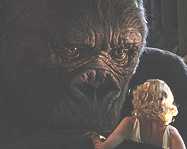
The January Bonus (Warning - SPOILER!!) In Kong's fall from the scaled-down Empire State building, how many times faster than normal should the film be shot to give Kong a proper-looking plummeting rate?
Hall of Fame (January Puzzle Solvers):
William Decorie (IL)
John Geohegan (NM)
Harold Gaines (KS)
![]()
DECEMBER '05 PUZZLE - "CAPACITY"
submitted by Dave Thomas
The December Bonus: What is the minimum number of gallons that Paul's gas tank(s) would have to hold in order for his scheme to be feasible?
Hall of Fame (December Puzzle Solvers):
William Decorie (IL)
Bob Schmidt (NM)
John Geohegan (NM)
Ken Lynch (TX)
![]()
submitted by John Geohegan
The November Bonus: What is the volume of the remaining material?
Hall of Fame (November Puzzle Solvers):
William Decorie (IL)
Bob Schmidt (NM)
Keith Gilbert (NM)
Click
HERE for the Answer
![]()
OCTOBER '05 PUZZLE - Double Sixes
submitted by John Geohegan
In 1654, Chevalier de Méré approached Blaise Pascal with a question about a gambling game that had been played for hundreds of years. The house would bet even money that a player would roll at least one double-six in 24 rolls of a pair of dice.
Hall of Fame (October Puzzle Solvers):
William Decorie (IL)
Bob Schmidt (NM)
Ross Goeres (NM)
Ken Lynch (TX)
![]()
SEPTEMBER '05 PUZZLE - The Mirror of Time
submitted by John Geohegan
Mike's age is multiplied by seven if its digits are reversed, and one more digit is inserted. How old is Mike?
Hall of Fame (September Puzzle Solvers):
William Decorie (IL)
Barry Spletzer (NM)
TexasSkeptic
(TX)
Bob Schmidt (NM)
Charles E. Oelsner (NM)
Kevin Webster (NM Lobo in WA)
Ken Lynch (TX)
![]()
AUGUST '05 PUZZLE - The Bargain Sale
Courtesy Sam Loyd
In describing his experiences at a bargain sale, Smith says that half his money was gone in just thirty minutes, so that he was left with as many pennies as he had dollars before, and but half as many dollars as before he had pennies.
Hall of Fame (August Puzzle Solvers):
John Geohegan (NM)
William Decorie (IL)
Eric Hanczyc (WA)
Charles E. Oelsner (NM)
Keith Gilbert (NM)
Bob Schmidt (NM)
TexasSkeptic
(TX)
![]()
JULY '05 PUZZLE - SELF-DIVISIBLE NUMBERS
Submitted by John Geohegan
New Scientist magazine publishes a new Enigma(math puzzle) each week. In the June 4 issue, the puzzle is to find the largest integer whose digits are all different (and do not include 0) that is divisible by each of its individual digits. Thus the number 248 is divisible by 2, 4, and 8 but so is 824 which is larger. The largest such integer is MUCH less than 987,654,321. Next month the solution will show how to cut this problem down to a reasonable size.
Hall of Fame (July Puzzle Solvers):
William Decorie (IL)
TexasSkeptic
(TX)
Charles E. Oelsner (NM)
Ken Lynch (TX)
![]()
JUNE '05 PUZZLE - THE NO-COMMISSION BROKER
Submitted by Dave Thomas
There was once a broker of Yeti fur, highly prized for its luxuriant texture. This broker boasted that he took no commissions when either buying or selling the fur. The townsfolk wondered how he could possibly stay in business, but he was apparently quite prosperous. After years had passed, they finally found out the broker's secret -- he was caught using a biased scale. The rigged scale was arranged to be an ounce per pound short when buying, and an ounce per pound heavy when selling. The broker's final transaction involved an amount of Yeti fur that would have given him $30.00 of illicit profit.
Hall of Fame (June Puzzle Solvers):
M. K. Johnson (NM)
John Geohegan (NM)
Harold Gaines (KS)
TexasSkeptic
(TX)
Pierre Scalise (AL)
Keith Gilbert (NM)
Ken Lynch (TX)
![]()
MAY '05 PUZZLE - THE MICRO-BREWMASTER
Submitted by TexasSkeptic
The Brownbagg Brewery's signature beer, Bob Brownbagg Barleywine, uses three strains of hops (Bitterbit, Flowergirl and Aromaroma) and three types of barley malt (Pale, Toasted and Burnt). The hops contribute Bitter, Aromatic, and Floral flavor fractions to the "wort" (unfermented beer syrup); the grains contribute color, complex carbohydrates ("unfermentable sugars") and glucose/maltose ("fermentable sugars"). Fermentation converts all the glucose/maltose into alcohol, one kg producing 500 ml of alcohol. The other components are not affected.
|
|
|
|
|
|
|
|
|
|
|
|
|
|
|
|
|
|
|
|
Hops yields
|
|
|
|
|
|
|
|
|
|
|
|
|
|
|
|
|
|
|
|
The final product contains (per liter):
|
|
|
|
|
|
|
|
|
|
|
|
|
|
The May Bonus: How much of each grain type and hop strain must the brewmaster purchase for one 6500 liter batch of Bob Brownbagg Barleywine?
Hall of Fame (May Puzzle Solvers):
Dave Thomas (NM)
Ken Lynch (TX)
Ross Goeres (NM)
John Geohegan (NM)
William J.Keith (PA)
![]()
APRIL '05 PUZZLE - JUGS
Submitted by Dave Thomas
World-renowned chemist Dr. Dweeb owned a 12-gallon jug full of sulfuric acid, and another smaller jug. He liked to make up his favorite 25% strength solution (with a quarter of the solution being H2SO4, and the rest good old H2O) with a curious procedure: first, he poured acid from the 12-gallon jug to fill the smaller jug, and then he topped off the big jug with water. After the acid and water had been thoroughly mixed in the big jug, he drew off another small jugful, and again topped off the large jug with more water, arriving at his 25% solution.
Hall of Fame (April Puzzle Solvers):
Keith Gilbert (NM)
John Geohegan (NM)
Bob Wood (NM)
TexasSkeptic
(TX)
Harold Gaines (KS)
Ken Lynch (TX)
![]()
MARCH '05 PUZZLE - RACE AGAINST TIME
Submitted by Dave Thomas
This month's puzzle might just be harder than it may at first appear! It seems that two brothers from the famous puzzle-solving Answer family, Bobby and Al Answer, were trying out some new hot rod cars on the family's private race-track. Once both racers were up to their respective speeds (Bobby's car was going 120 miles per hour, and Al's was going 95 mph), they crossed the starting mark of the two-mile track just as the gun went off, and then maintained their respective speeds for 24 laps each.
At what position on the two-mile track (relative to the starting mark) does this occur?
Hall of Fame (March Puzzle Solvers):
Jesse Johnson (NM)
TexasSkeptic (TX)
Keith Gilbert (NM)
Ken Lynch (TX)
John Fleck (NM)
![]()
FEBRUARY '05 PUZZLE - THE BIG BEER BASH
Submitted by Dave Thomas
This month's puzzle is for today's mathematically-minded college frat rats and party-goers. The Kappa Kuppa K'rona fraternity was planning for the Big Bash. Usually, 10 cases of Spud Beer, which is 6 and 1/4 % alcohol by volume, are required for the Bash. (There are four 6-packs per case, and 12 ounces per beer, of course!). This year, however, crafty funds manager George Waldo Busch calculated that they wouldn't need to buy as many cases if they got "Beastie Beer" instead, since that brand has a mind-numbing 15 and 5/8% alcohol by volume.
Hall of Fame (February Puzzle Solvers):
John Geohegan (NM)
Marilyn Goodrich (NM)
TexasSkeptic (TX)
Harold H. Gaines (KS)
Mike Arms (NM)
Ken Lynch (TX)
![]()
JANUARY '05 PUZZLE - SOLVE FOR X
Submitted by John Geohegan
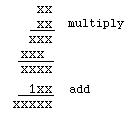
Hall of Fame (January Puzzle Solvers):
Marilyn Goodrich (NM)
Rod Earwood (NM)
Mark Maravetz (NM)
Ken Lynch (TX)

This is the Old Puzzle Archive. See NEW Puzzles!
